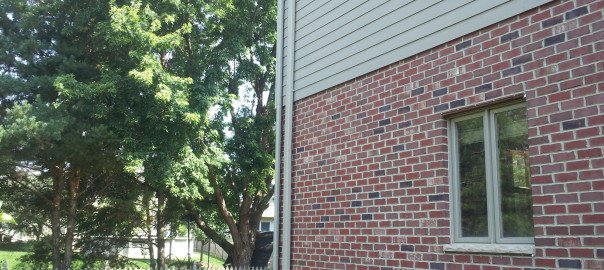Getting The Most Value From Your Radon Mitigation System

When it comes to radon mitigation systems, not all systems are created equal. Here is Illinois, radon mitigation is a licensed profession by the State of Illinois therefore mitigation standards have been set and must be adhered to. With that being said ~ a system may meet all compliance standards but not pass the approval of the homeowner(s).
Starting with some basics, a radon system must have a few basic necessities to function properly. They consist of suction point(s), a minimum of 3 inch piping, the right amount of pitch, a manometer, commonly referred to as a U-tube, a radon fan, sometimes plastic sheeting depending on the needs of the home and other small hardware items to assist in mounting the system properly. Lastly, what I feel is just as important is the craftsmanship and aesthetics of the system and how it will coexist with your particular home.
So what does all of that mean? Well for starters, Guardian Radon Mitigation will not put a discount system on a higher end house. For that matter, we won’t install a discount system on a discount house!! System location, having unnecessary turns, the use of white pvc pipe vs aluminum downspout for exterior systems will all have an effect of the overall look of your system. They type of radon fan used deserves its own mention. How energy efficient if that fan? How much noise will it make? What type of warranty is offered? You want to take into consideration how you are currently using your home and more importantly, how may the home be used in the future??
Let’s turn our conversation to meeting local compliance standards. Be sure and verify that your contractor has the proper insurance and bonding in place and is registered to work in your community (if necessary). Is a permit involved? If so, did the contractor disclose that to you? Have they pulled the necessary permit(s) for your radon system? Call your local Village office to inquire about this. What about if you live in a development that is managed by a home owners association? Has the HOA approved your installation and type of technique used? Will your contractor work with your HOA?
It’s a bit more involved than just “price shopping.” Most system installs will range between $800 – $2500 nationally according to the EPA. Drilling down a bit more, the majority of systems will fall between $1000 – $1200 for homes that have just one “footprint” (i.e. just a basement, or slab only etc.). The take away is, when you are making your buying decision, base your decision on the whole picture and the lowest cost of ownership as well as best results – not just price.
We leave you with this: “Price is what you pay, Value is what you get!” – Warren Buffet
Back To Blog






